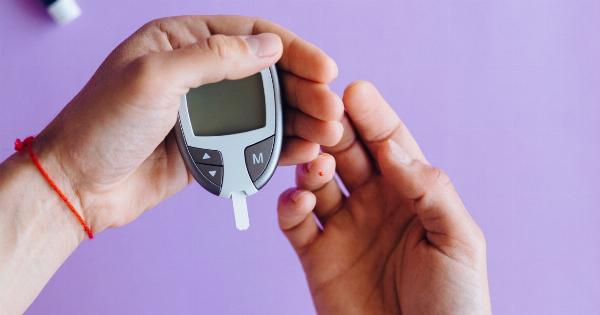With the increasing prevalence of chronic diseases like diabetes, hypertension, and thrombosis, effective drug therapy has become essential in managing these conditions and improving patient outcomes.
These three conditions often occur together and can significantly impact an individual’s health and quality of life. In this article, we will explore the importance of drug therapy in controlling diabetes, hypertension, and thrombosis, and how it can help patients lead a healthier life.
1. Understanding Diabetes and its Treatment
Diabetes is a chronic condition characterized by elevated blood sugar levels. It can cause a wide range of complications, including heart disease, nerve damage, and kidney problems.
Effective drug therapy, combined with lifestyle changes, can help individuals with diabetes keep their blood sugar levels in a healthy range.
Commonly prescribed medications for diabetes include:.
- Metformin: It works by reducing glucose production in the liver and improving insulin sensitivity.
- Insulin: Injected insulin is necessary for individuals with type 1 diabetes and is also prescribed for some people with type 2 diabetes.
- Sulfonylureas: These medications stimulate the pancreas to produce more insulin.
- DPP-4 inhibitors: They help lower blood sugar levels by preventing the breakdown of incretin hormones.
2. Managing Hypertension with Drug Therapy
Hypertension, or high blood pressure, is a common condition that can increase the risk of heart disease, stroke, and kidney problems. Along with lifestyle modifications, drug therapy plays a crucial role in controlling hypertension.
Some commonly prescribed medications for hypertension include:.
- Angiotensin-converting enzyme (ACE) inhibitors: These medications relax blood vessels, reducing blood pressure.
- Angiotensin receptor blockers (ARBs): They block the effects of angiotensin, a hormone that narrows blood vessels.
- Calcium channel blockers: These medications prevent calcium from entering the cells of the heart and blood vessels, leading to relaxation of blood vessels and lower blood pressure.
- Diuretics: They increase urine production, reducing the volume of fluid in the blood vessels and lowering blood pressure.
3. Addressing Thrombosis with Anticoagulant Therapy
Thrombosis refers to the formation of blood clots inside blood vessels, which can lead to serious complications like heart attack and stroke. Anticoagulant therapy is often prescribed to prevent or treat blood clots and manage thrombosis.
The commonly used anticoagulant medications include:.
- Heparin: It prevents blood clotting by inhibiting the formation of fibrin, a protein involved in blood clot formation.
- Warfarin: This oral anticoagulant interferes with the body’s ability to use vitamin K to form blood clots.
- Direct oral anticoagulants (DOACs): These newer medications directly target specific clotting factors in the blood.
4. The Importance of Adherence and Monitoring
While drug therapy is crucial in managing these conditions, it is equally important for patients to adhere to their prescribed medications and regularly monitor their condition.
Adherence to drug therapy involves taking medications as prescribed, following a healthy lifestyle, and attending regular medical check-ups.
Non-adherence can lead to poor control of diabetes, hypertension, or thrombosis, and increased risk of complications.
Regular monitoring includes periodic blood tests, blood pressure checks, and follow-ups with healthcare professionals. This ensures that the prescribed drug therapy is effective and adjustments can be made if necessary.
5. Potential Side Effects and Precautions
While drug therapy for diabetes, hypertension, and thrombosis can be highly effective, it is essential to be aware of potential side effects and take necessary precautions.
Common side effects of diabetes medications include gastrointestinal symptoms, hypoglycemia, and weight gain.
Patients should also be cautious about potential drug interactions and inform their healthcare provider about all the medications they are taking.
Hypertension medications may cause side effects such as dizziness, headache, and fatigue. It is important to continue taking medication as prescribed and consult a healthcare professional if experiencing troublesome side effects.
Anticoagulant therapy for thrombosis can increase the risk of bleeding. Patients should be vigilant about any signs of bleeding, regularly monitor their blood clotting levels, and report any concerns to their healthcare provider immediately.
Conclusion
Controlling diabetes, hypertension, and thrombosis requires a comprehensive approach that includes effective drug therapy.
Medications prescribed for these conditions play a vital role in managing symptoms, preventing complications, and improving overall health.
To achieve the best outcomes, it is crucial for individuals to adhere to their prescribed drug therapy, adopt healthy lifestyle practices, and regularly monitor their condition.
By following these steps, patients can effectively control these chronic conditions and lead a healthier life.































